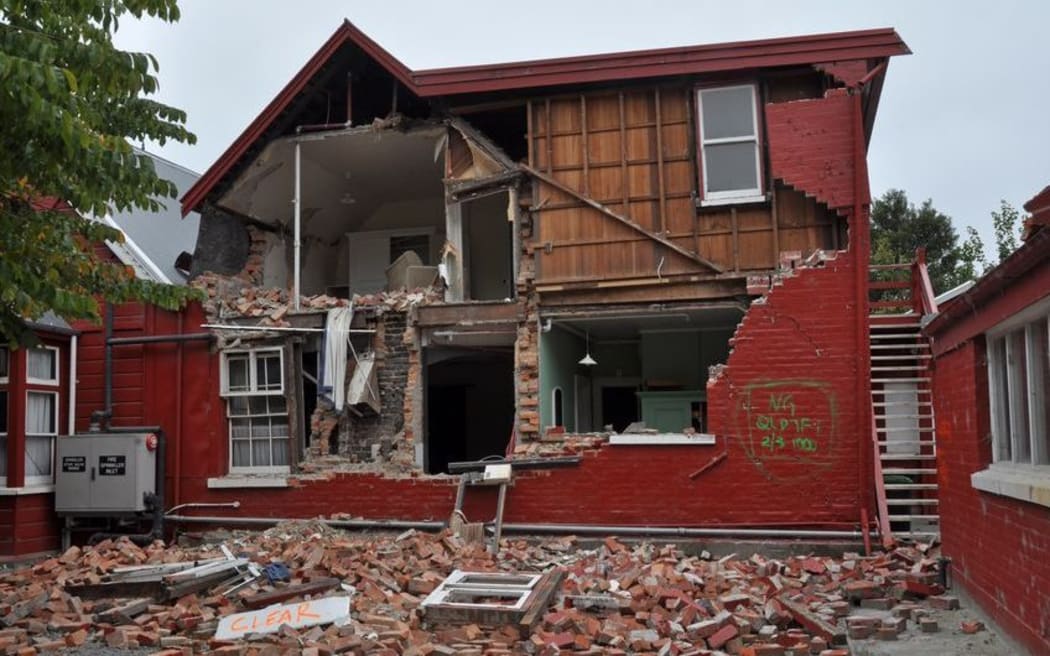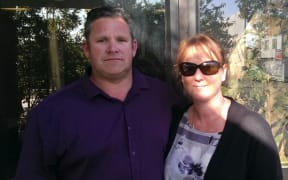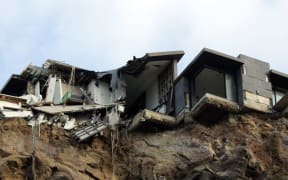A government investigation into underfloor structural repairs carried out in Canterbury since the earthquakes has found major non-compliance issues.

Many houses, such as this one in Cramner Square, were damaged beyond repair in the Christchurch earthquakes. Photo: 123RF
The Ministry of Business, Innovation and Employment (MBIE) today released its report into structural repairs which were exempted from needing a building consent. It revealed more than a third of the surveyed homes failed to meet the building code.
Thirty-two of the 90 homes surveyed did not meet the Building Code, while a further 23 had defects.
It said while no homes posed a risk to life, not fixing repair work could increase a property's vulnerability in future earthquakes.
Thirty of the non-compliant repairs involved the use of a common repair strategy to re-level quake-damaged floors, known as a jack and pack. The method involves re-levelling floors by jacking them up and packing the gap between the floor and the pile.
The repairs surveyed were carried out by private insurers, the Earthquake Commission (EQC) and Housing New Zealand.
MBIE has recommended agencies rectify non-compliance issues and undertake a review of completed repair work which has been exempted from a building consent, especially those which have used the jack and pack method.
MBIE said it would review the appropriateness of consent exemptions for foundation-related work.
A ministry official told a media briefing in Christchurch this morning the findings were disappointing for homeowners and the building industry.
Unlicensed builders under investigation
The ministry said repair work for at least nine of the surveyed homes was supervised by a licensed building practitioner, who could now be the subject of complaints to the Building Practitioners Board.
It said a further two builders appeared to have falsely claimed licensed building practitioner status, which is a more serious offence. These builders are being investigated.
EQC chief executive Ian Simpson said about 3600 properties where repairs had been completed and signed off would be checked as a result of the MBIE inspection.
There were a further 2100 properties - where non-consented work was being carried out - where work had been completed but a site inspection was yet to take place.
He said he expected about 1200 homes to require further work to bring them up to code.
He said the EQC would bear the cost of the normal checks while Fletcher EQR - the principle contractor of the home repair programme - would have to pay for additional checks where required.
Questions over EQC responsibility
Canterbury Earthquake Recovery Minister Gerry Brownlee defended the EQC following the release of the report, saying the agency was not to blame for substandard repairs.
The minister said shoddy builders were at fault.
"Well, who did the work? EQC didn't. EQC put out the scope of the work [to] see what needed to be done and then, through the project office, these people were paid for certifying that they had done the work.
"When it's found that they didn't do the work, they're the ones that are paying to put it right."
But a spokeswoman for community advocacy group Cancern, Leanne Curtis, said despite the report blaming builders, the buck needed to stop with the EQC and insurers.
Ms Curtis said contractors knew work was not up to quality standards but the pressure they were under was huge.
She said that did not excuse substandard repairs but was something the report failed to look at.



